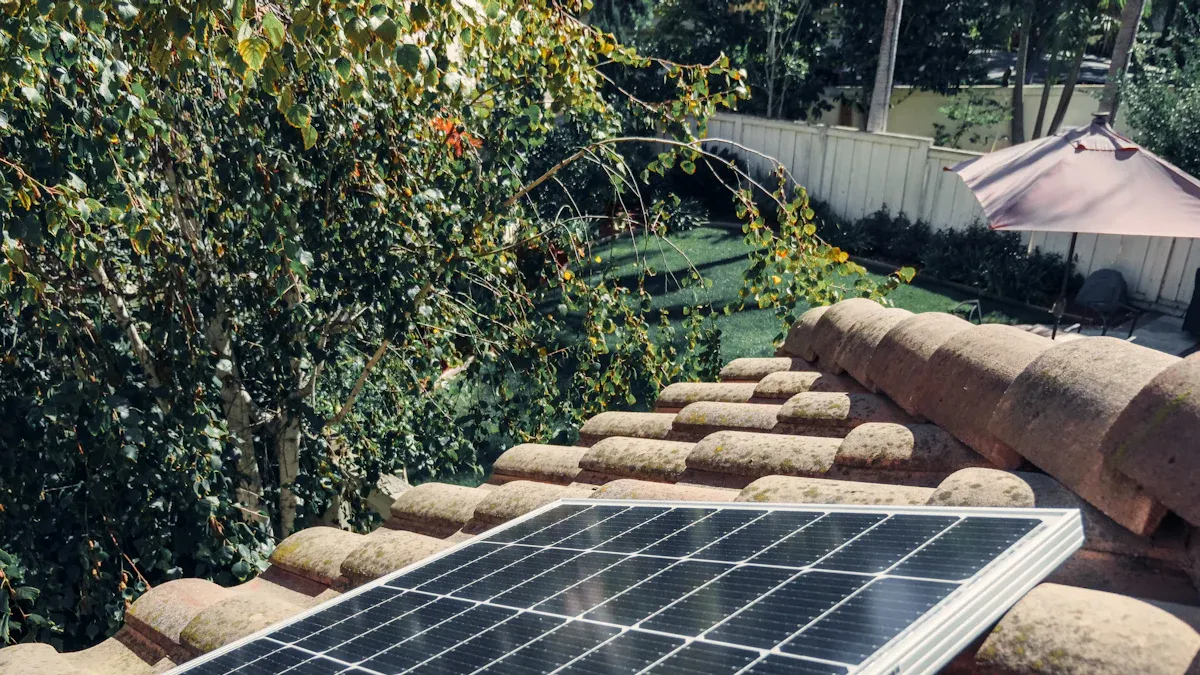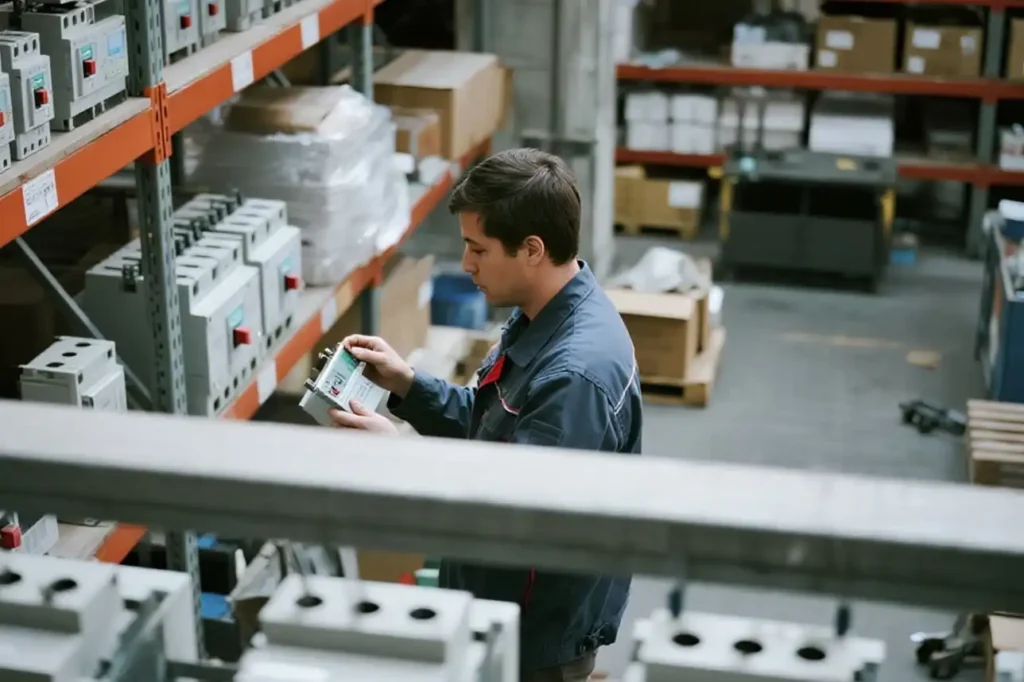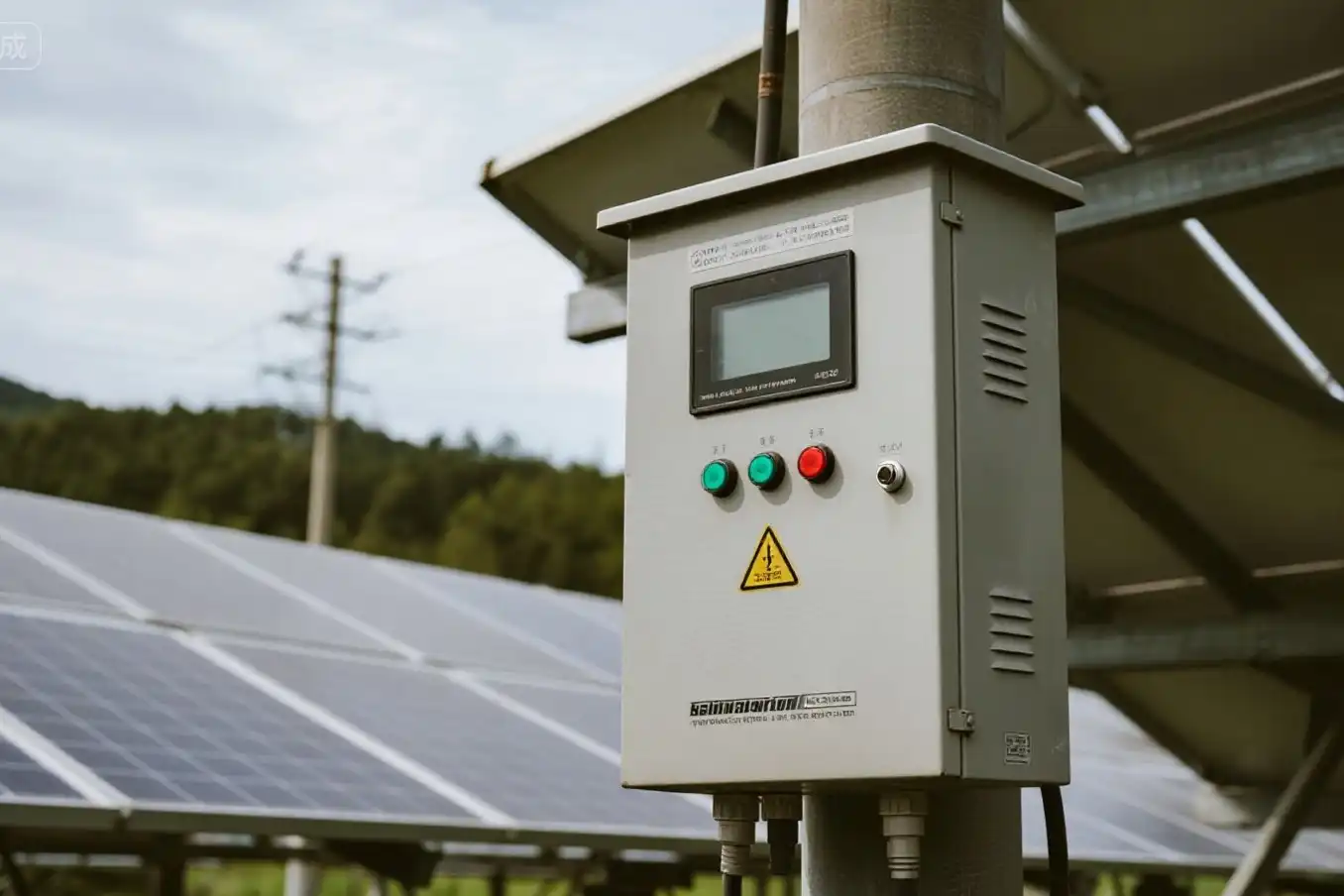When you select automatic transfer switch solutions, it’s important to consider the size and features that best fit your needs. Make sure the switch you choose matches your power requirements, electrical system, and generator to ensure safety and reliability during a power outage. Selecting the right automatic transfer switch helps protect your home or business and ensures continuous operation. Leading brands like ONESTOP offer a variety of options, making it easy to select automatic transfer switch models for residential, commercial, or industrial applications.
The table below highlights how many sectors select automatic transfer switch systems to prevent downtime:
| Sector | Percentage Using Automatic Transfer Switches |
|---|---|
| Industrial | ~65% |
| Commercial | Over 48% |
| Residential | 37%–46% |
| Overall | About 61% |
Key Takeaways
- Pick an automatic transfer switch that fits your power needs. Make sure it works with your electrical system and generator. This helps keep your home or business safe when the power goes out.
- Decide if you want to back up the whole house or just important circuits. This helps you choose the right switch size. It also helps you save fuel and money.
- Always check the amperage, voltage, and phase ratings. Make sure your switch matches your main panel and generator. This keeps power transfer safe and reliable.
- Choose the transfer switch type: open, closed, or delayed transition. Think about how sensitive your equipment is. Also, think about how much power loss you can allow.
- Get a licensed electrician to install and take care of your switch. This helps you avoid mistakes and stay safe. It also makes sure your backup power works when you need it.
Assess Power Needs

Whole House vs. Essential Circuits
You need to decide if you want to power your whole house or just the most important circuits before picking a load center automatic transfer switch. This choice changes what size standby generator you need and which transfer switch works best.
| Aspect | Whole Home Coverage | Essential Circuits Coverage |
|---|---|---|
| Power Coverage | Powers all circuits and appliances in home | Powers only critical circuits (fridge, lighting, security, sump pump) |
| Generator Size | Larger generators, typically 22kW or more | Smaller generators, usually 9kW to 16kW |
| Transfer Switch | Whole-home automatic transfer switch | Managed or selective load transfer switch |
| Upfront Cost | Higher due to size and installation complexity | Lower, smaller generator and simpler installation |
| Fuel Usage | Higher fuel consumption | Lower fuel consumption |
| Typical Users | Larger homes, high comfort or medical needs | Smaller homes, budget-conscious users |
| Ease of Use | Seamless, powers everything automatically | Requires awareness of power limits |
A whole-house backup system gives you comfort and keeps everything running, like your HVAC and kitchen appliances. If you only want to keep the most important things on, you can use a smaller standby generator and a load center automatic transfer switch for certain circuits. This way, you save money on fuel and installation, which is good for smaller homes or if you want to spend less.
💡 Tip: Write down the devices you really need, like refrigerators, medical equipment, or security systems, before you pick which circuits to back up with your generator.
Load Calculation
It is important to do a correct load calculation so your load center automatic transfer switch and standby generator can handle your needs. For homes, you can use the National Electrical Code (NEC) methods:
- Add up lighting, small appliances, laundry, dryers, cooking appliances, fixed appliances, and motor loads using the standard method. Look at NEC Articles 220 and 230.
- You can also use the optional method, which treats most loads as general and uses demand factors. Make sure to include the nameplate ratings for appliances and motors.
- Only count the biggest noncoincident load, like heating or air conditioning, since they do not run together.
- Pick the largest heating or air conditioning load by looking at the nameplate ratings and conditions.
- Make sure your neutral conductor sizing follows NEC rules for unbalanced loads.
For commercial or industrial places, add up the current for each load type and pick a load center automatic transfer switch with a higher rating than your total. Use this formula for three-phase systems:
Amps = (kW × 1000) ÷ (Volts × √3 × Power Factor)
For example, a 100 kW backup generator at 480 volts with a 0.8 power factor needs about 150 amps. Always choose a transfer switch with a rating that is the same or higher than your total load, and think about future needs.
Picking the right load center automatic transfer switch keeps your electrical system safe and makes sure your standby generator or backup generator gives you power when you need it.
Select Automatic Transfer Switch Specs
Picking the right specs is very important when you select automatic transfer switch equipment for your home or business. You must make sure the switch matches your electrical system and generator. This keeps power safe and steady during blackouts.
Amperage and Voltage
First, check the amperage and voltage ratings on your main electrical panel and generator. The automatic transfer switch must handle the highest current your system uses. Look at your main breaker’s amperage rating. Your switch should be the same or higher. For example, if your main breaker is 200 amps, pick a 200-amp automatic transfer switch.
⚡ Tip: Never use a switch with lower amperage than your main breaker. This can make the switch overheat and cause safety problems.
Voltage is also important. Most homes use 120/240V. Some businesses and factories use higher voltages. Always check your generator’s output and your building’s voltage before you select automatic transfer switch specs.
ONESTOP has many automatic transfer switch models. You can ask for custom amperage and voltage ratings to fit your setup. This helps you get the right match for your system, whether you need a small switch for a house or a big one for a factory.
Phase and Compatibility
Next, check what phase your electrical system uses. Most homes use single-phase power. Many businesses and factories use three-phase power for big machines. Your automatic transfer switch must match the phase of your main supply and your generator.
- Single-phase switches are good for most homes and small offices.
- Three-phase switches work best for big buildings, factories, and places with large motors or HVAC systems.
Compatibility is important. Make sure your generator automatic transfer switch works with your generator’s control signals and voltage. Some generators need special switches for remote start or advanced monitoring. ONESTOP has both single-phase and three-phase options, with models that support different control methods and ways to install.
Generator Automatic Transfer Switch Sizing
Sizing is very important when you select automatic transfer switch equipment. If the switch is too small, you can have big problems:
- Overloading can make the switch break or even catch fire.
- The switch might not move power during a blackout, so you lose backup.
- Overloaded switches can spark or get too hot, which is dangerous.
- Wrong sizing can make your generator’s voltage and frequency change, causing false transfers or shutdowns.
- If you have more than one generator, bad sizing can stop them from working together, making one overload and fail.
To stop these problems, always pick a generator automatic transfer switch that can handle all the power you need during a blackout. For a standby generator, match the switch’s amperage to the generator’s output and your main panel’s rating. If you want to add more equipment later, pick a switch with extra space.
🛠️ Note: Getting a pro to install and check your load helps you avoid costly mistakes. ONESTOP lets you order a switch with the exact specs you need.
Here’s a quick look at ONESTOP’s custom options compared to other brands:
| Aspect | ONESTOP Customization Options | Industry Competitors Features |
|---|---|---|
| Product Range | Many types, including automatic/manual types | Focus on PLC-controlled ATS units |
| Customization | Amperage, voltage, switch types by request | Lots of PLC logic customization |
| Additional Features | Trusted brands, fast delivery, portable power support | Remote monitoring, data logging, SCADA integration |
| Complexity & Cost | Simple design, lower cost | Higher complexity and cost |
When you select automatic transfer switch specs, think about what you need now and in the future. ONESTOP’s flexible options make it easy to get the right fit for any job, from a small backup generator at home to a big industrial standby generator system.
Choose Automatic Transfer Switch Type
Picking the right transfer type is very important. Each type works best in different places. You should match the transfer method to your power needs. Think about how sensitive your equipment is.
Open Transition
Open transition switches use a “break before make” process. This means the switch stops main power before backup starts. There is a short pause before power comes back. The pause can last a few milliseconds or a few seconds. Open transition switches are good if a short power break is not a problem. You often see them in stores and small factories.
Tip: Use open transition switches for systems that are not critical. A short power loss is okay. These switches keep both power sources from connecting at once.
Closed Transition
Closed transition switches give smooth power transfer. Both power sources overlap for a moment. Your equipment does not lose power. Use closed transition switches where even a tiny power loss is bad. Hospitals and data centers need this type. Closed transition switches need both power sources to match before switching. This keeps things safe and smooth.
- Closed transition switches protect sensitive equipment.
- They help UPS batteries last longer by stopping extra use.
- You need this type when power must always stay on.
Delayed Transition
Delayed transition switches add a pause between power sources. This pause stops inrush current that can hurt motors or transformers. You do not need to match both power sources. Delayed transition switches are good for loads with leftover voltage or strong magnets. You will have a short power break unless you use a UPS or battery.
| Transition Type | Power Interruption | Best For | Special Features |
|---|---|---|---|
| Open Transition | Brief (ms–s) | Non-critical loads | Simple, cost-effective |
| Closed Transition | None | Critical, sensitive environments | Seamless, requires synchronization |
| Delayed Transition | Brief (with delay) | Inductive/residual voltage loads | Prevents inrush current |
ONESTOP has all these switching types. You can pick open, closed, or delayed transition models. ONESTOP’s features and custom options help you get the right switch for any job, from homes to big factories.
Evaluate Features and Quality
Protection and Safety
When you pick an automatic transfer switch, check safety features first. Look for an external manual operator (EMO). This lets you change power without opening the cabinet. It keeps you safe from arc flash and live wires. Quick-break contacts help stop arcs fast. This protects the switch from getting too hot and helps it last longer. Choose switches made with strong materials like machined copper contacts and tungsten tips. These make the switch safer and tougher.
Make sure the ATS has the right short-circuit current withstand and closing ratings (WCR). These ratings must match your circuit breakers or fuses. Fuse protection gives high WCR and helps with selective coordination, even if there is a big fault. Always check that your ATS meets NEC and UL 1008 standards for emergency systems. These steps help you get the best safety and protection for your home or business.
⚠️ Tip: Good ATS design and matching it to your system can stop expensive mistakes and keep your setup safe.
Monitoring and Control
Modern automatic transfer switches have great monitoring and control features. You can see the real-time status of your power sources. You can also check voltage, frequency, and power quality from anywhere. Many ATS units let you set how they work, so your system switches smoothly during an outage. You can connect your ATS to building management systems or cloud platforms to watch your system from far away.
Advanced sensors find power problems fast. Microprocessor controls help you pick which loads are most important and change transfer settings. You can use apps or websites to check your ATS and fix problems quickly. These features help you find faults, stop dangers, and make your system work better.
- Real-time data on power and load
- Sensitive detection of voltage and frequency changes
- Remote monitoring and control for fast response
Reliability and Support
You want your ATS to work well for a long time. Look for products with ISO 9001 and UL certifications. These show the product is tested for quality and safety. Check if it meets IEC and NEMA standards. A good ATS should not break often, should switch fast, and be built strong. It should work in tough places and give steady service.
ONESTOP gives you warranty, technical support, and repair help. You can use customer portals to manage your system easily. Their team can help with installation, maintenance, and advice to keep your system working. Most ATS units last about 10 years if you take care of them. Doing regular checks and using surge protection can stop problems and help your ATS last longer.
| Reliability Factor | What to Look For |
|---|---|
| Certifications | ISO 9001, UL, IEC, NEMA |
| Support | Warranty, technical help, repair |
| Build Quality | Durable materials, strong construction |
| Maintenance | Easy access, clear instructions |
Consult a Professional
Installation Guidance
It is smart to talk to a professional before you install an automatic transfer switch. A licensed electrician knows how to work with high-voltage equipment. This keeps you and your property safe from electrical dangers.
When you pick someone to install your switch, look for these things:
- The person should be a licensed electrician.
- They should have certifications from groups like NFPA or IEEE.
- They need experience with ATS or generator transfer switch jobs.
- They should have a good reputation and happy customers.
- They must know local, state, and national electrical codes.
A certified technician will follow all safety rules. This helps you avoid legal trouble and keeps your home insurance good. You can ask to see their credentials before they start. Many professionals also give advice about the best ATS model for you. They can help you pick the right size and features for your home or business.
🛡️ Tip: Always ask your installer if they have worked with ATS systems before. A skilled professional will answer your questions and explain what will happen.
Avoiding Common Mistakes
You can stop many problems by hiring a qualified expert. Here are some mistakes you should not make:
- Picking the wrong size ATS for your generator or main panel
- Not grounding and bonding the system the right way
- Forgetting about code rules for emergency systems
- Not doing regular maintenance after the switch is installed
- Hiring someone who is not licensed or does not have enough experience
A professional will check your load calculations and make sure your ATS fits your system. They will also test the switch after it is installed to make sure it works. This step makes sure your backup power will turn on when you need it.
⚠️ Note: Mistakes during installation can cause power failures, damage equipment, or even start a fire. Trusting a certified electrician keeps your investment safe and helps you feel calm.
You need to pick an automatic transfer switch that fits your system. Check the amperage, voltage, and phase so they match. Always look at the ATS nameplate for details. Make sure it works with your generator and main panel. Look for features like remote monitoring and safety. Think about what type of transfer you want. Ask a skilled electrician for help if you are not sure. Brands like ONESTOP let you choose options for any job.
Before you buy, make a checklist. Compare the specs, how to install it, and what support you get. This helps you pick a switch that is safe and works well.
FAQ
What size automatic transfer switch do you need for your home?
Pick an automatic transfer switch with the same amperage as your main breaker or generator. Most homes use a 100-amp or 200-amp switch. Always check your electrical panel and generator before you decide.
Can you install an automatic transfer switch yourself?
Do not try to install an automatic transfer switch on your own. Only a licensed electrician should do this work. This keeps you safe and makes sure your system follows all rules.
How do you know if your generator and ATS are compatible?
Check the voltage, amperage, and phase for your generator and automatic transfer switch. Both must use the same control signals. If you are not sure, ask your generator supplier or an electrician.
What maintenance does an automatic transfer switch require?
Check your automatic transfer switch every six months. Look for dust, loose wires, or damage. Test the switch and clean the outside. Have a professional check it once a year for best results.
Can you use an ATS for both residential and industrial applications?
Yes, you can use an automatic transfer switch for homes, businesses, or factories. Pick a model that fits your power needs and where you will use it. ONESTOP has choices for every type of job.
The following information may be of interest to you
What Are Automatic Transfer Switches and Their Key Functions
Selection guide for three-phase automatic transfer switch
How to use ATS in conjunction with a generator
Benefits of Installing an ATS for Household Backup Power





